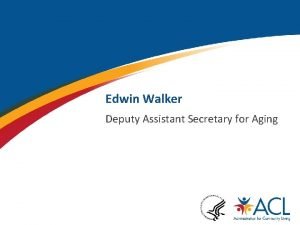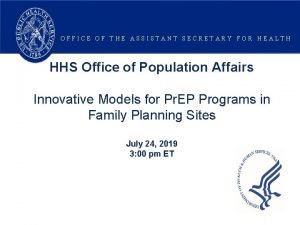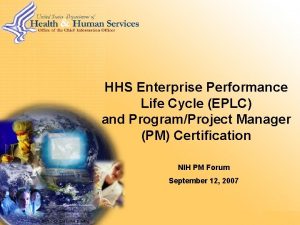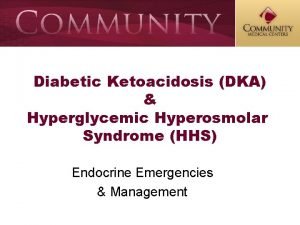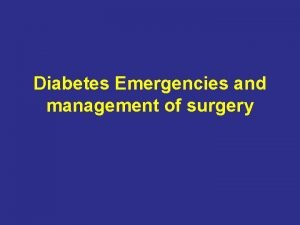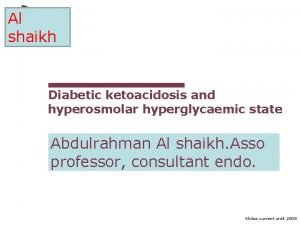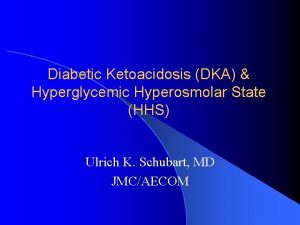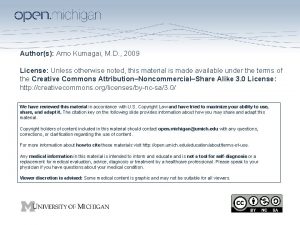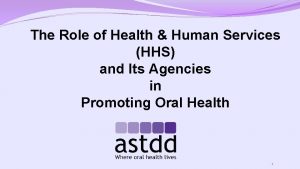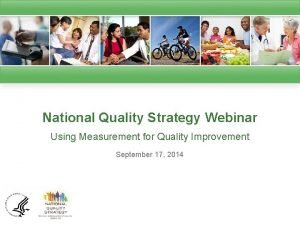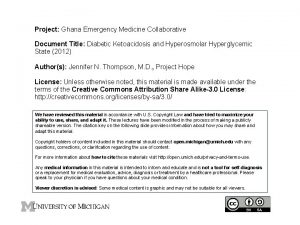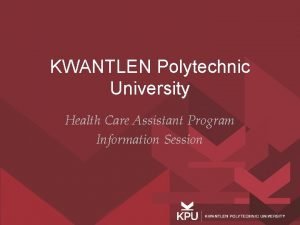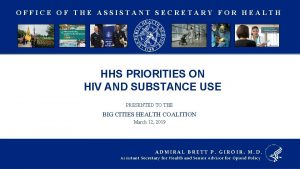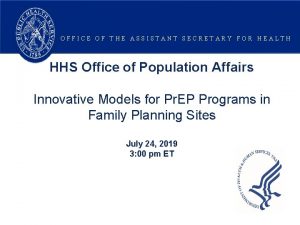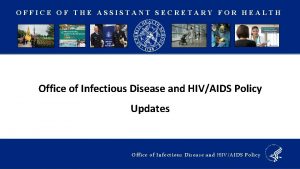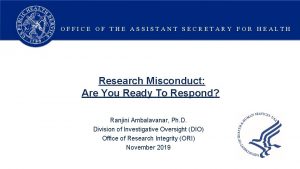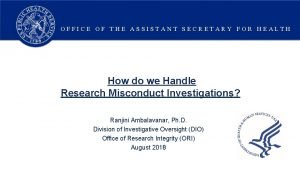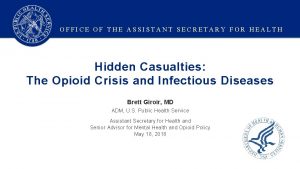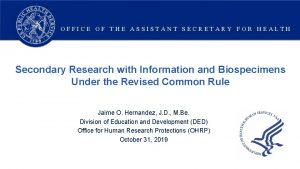OFFICE OF THE ASSISTANT SECRETARY FOR HEALTH HHS



































- Slides: 35

OFFICE OF THE ASSISTANT SECRETARY FOR HEALTH HHS Office of Population Affairs Financing Pr. EP Services in Family Planning Settings June 6, 2019 3: 00 pm ET

Welcome! • Objectives § Describe the components of Pr. EP services and the associated costs § Provide an overview of the various financing and delivery mechanisms for Pr. EP, including co-pay assistance programs, state Pr. EP assistance programs, and 340 B models § Discuss late-breaking policy developments with implications for Pr. EP financing § Share resources for Pr. EP financing • Introduction of the speakers § Cynda Hall, HHS Office of Population Affairs (OPA) § Amy Killelea, National Alliance of State and Territorial AIDS Directors (NASTAD) Note: This call will be recorded O F F I C E O F T H E ASSISTANT SECRETARY FOR HEALTH 2

Pre-Exposure Prophylaxis (Pr. EP) • Pr. EP, a once-a-day pill (brand name Truvada), has been demonstrated to reduce the risk of HIV infection up to 92% when taken as directed. • In 2014, the US Public Health Service released the first comprehensive clinical practice guidelines for Pr. EP, which were developed by a federal interagency working group led by Centers for Disease Control and Prevention (CDC). § Guidelines recommend Pr. EP as one prevention option for: Sexually-active adult MSM, adult heterosexually active men, adult injection drug users and heterosexually-active women at substantial risk of HIV acquisition. Source: Centers for Disease Control and Prevention (CDC). Preexposure Prophylaxis for the Prevention of HIV Infection in the United States - 2014: A Clinical Practice Guideline. O F F I C E O F T H E ASSISTANT SECRETARY FOR HEALTH 3

Family Planning Services and Pr. EP • Title X family planning sites are a primary source of care for many women, serving approximately 3. 5 million women annually • Family planning providers are exceptionally qualified to provide HIV prevention services to women while incorporating clients’ health goals into individual health care decisions § Women also consider family planning clinics a preferred source for information about Pr. EP and access to Pr. EP services Sources: Auerbach, J. D. , et al. (2015). Knowledge, attitudes, and likelihood of pre-exposure prophylaxis (Pr. EP) use among US women at risk of acquiring HIV. AIDS patient care and STDs, 29(2), 102 -110. ; Sales, J. M. , et al. (2019). Patient recommendations for Pr. EP information dissemination at family planning clinics in Atlanta, Georgia. Contraception. ; Seidman, D. , & Weber, S. (2016). Integrating preexposure prophylaxis for human immunodeficiency virus prevention into women's health care in the United States. Obstetrics & Gynecology, 128(1), 37 -43. O F F I C E O F T H E ASSISTANT SECRETARY FOR HEALTH 4

Title X and HIV Prevention Title X is the only federal program dedicated solely to the provision of family planning and related preventive services. All Title X funded agencies are required to provide, at a minimum, HIV/AIDS prevention education, including education on risks and infection prevention, and testing, either onsite or by referral. Providing Pr. EP as a part of Title X services is allowable and can be covered as a Title X service if a grantee includes it in their description of their Title X project. O F F I C E O F T H E ASSISTANT SECRETARY FOR HEALTH 5

OPA Pr. EP Training Webinar Series Webinar Topic Date National Kick-Off Webinar: Pr. EP for HIV Prevention in Family Planning Settings* April 4, 2019 3 pm EST #1: Prescribing Pr. EP in Family Planning Sites* May 20, 2019 12 pm EST #2: Financing Pr. EP Services in Family Planning Sites June 6, 2019 3 pm EST #3: Innovative Models for Pr. EP Programs in Family Planning Sites July 2019 (TBD) #4: Community Partnerships for Pr. EP in Family Planning Sites August 2019 (TBD) *Recordings and slides for past webinars are available on www. fpntc. org O F F I C E O F T H E ASSISTANT SECRETARY FOR HEALTH 6

Pr. EP Financing & Sustainability Amy Killelea NASTAD

Presentation Road Map § Pr. EP Overview § Pr. EP Pipeline Overview § Coverage and Cost Landscape § Coverage Policies Impacting Pr. EP Access and Affordability § Considerations for Sustainable Pr. EP Payment and Delivery Models

Pr. EP Overview

What is Pr. EP

Payment and Delivery Barriers to Pr. EP

Pr. EP Prescribing Patterns But it’s not nearly enough…

Pr. EP Disparities § Pr. EP prescriptions varied significantly based on gender, geography, and race/ethnicity: Only ~7% of the 1. 2 million people eligible for Pr. EP are actually using it as a prevention tool o Among Black and Latino gay and other men who have sex with men, only 1% and 3% are using Pr. EP respectively o Women had far lower rates of Pr. EP prescriptions (93% of all Pr. EP users in 2016 were men) o The U. S. South, which accounted for half of all new HIV diagnoses in 2016, had lower rates of Pr. EP prescriptions o

Pr. EP Pipeline Overview

Pr. EP Pipeline: At-a-Glance Route of Administration Status Oral Single generic competitor in Sept 2020; multiple competitors beginning March 2012 TAF/FTC Oral Phase III (Phase I-II in African women) RAL/3 TC Oral Phase IV Long-acting Phase III Product TDF/FTC Cabotegravir Dapivirine Ring Phase III/FDA review (ring); 3 -month ring and rectal gel in development Tenofovir Ring Phase I Dapivirine or tenofovir + levonorgestrel Ring Tenofovir, TAF/EVG, IQP 0528, Griffithsin, PC-1005, DS 003 Vaginal or rectal inserts, enemas, and tablets Phase I Pre-clinical – Phase I

Pr. EP Coverage and Cost Landscape

Pr. EP Components and Costs Pr. EP Components Cash Price* Medication (Truvada is only FDA-approved medication for ~$1, 700/month (Wholesale Pr. EP currently) Acquisition Cost, no discount); ~$440/month (340 B Price) Lab costs** (at Pr. EP initiation and every three months) • Baseline HIV test • HBV tests (at initiation only) • Metabolic panel/creatine test • Gonorrhea and Chlamydia screening • Syphilis screening ~$291 to $3, 955 Physician visit (at initiation and every three months) ~$60 to $177 per visit * Above costs are estimates, the cash price of services varies significantly depending on geography and provider. Many providers provide lab and clinical services to uninsured patients at a reduced rate. ** Providers should refer to the CDC Pr. EP Clinical Guidelines for specific lab recommendations based on patient risk and other factors. Source: Whitman, et al, Costs of Providing Pr. EP for HIV Prevention: Estimates from a Community Health Center, (Abstract PS 3 -44, 39 th SMDH, 2017).

Getting the Cost and Access Incentives Right Family planning clinics Pr. EP DAPs (state HD) Uninsured populations (non-340 B discount) Underinsured populations Private providers Insured populations Local health departments (STD clinics) Community health centers Uninsured populations (340 B discount) Underinsured populations Insured populations Manufacturer Co-pay and Patient Assistance Programs & Donation Program

Financing Models for Pr. EP: A Patchwork of Funding and Delivery Mechanisms… Drug Access Uninsured Manufacturer Patient Assistance Program Pr. EP Clinical Visits & Lab Costs Counseling and Linkage Pr. EP DAPs (state funded) CDC prevention funds to pay for HIV/STD testing CDC prevention grants and 340 B savings Pr. EP Drug Assistance Programs or “Pr. EP DAPs” Community Health (state funded) Centers; Family Planning Community Health Clinics; STD Clinics using Centers; Family Planning 340 B savings Clinics; STD Clinics using 340 B savings Insured Covered by payers; copay assistance through manufacturer assistance program Largely covered, but with patient co-pays Pr. EP DAPs pay for lab/clinical visit co-pays (state funded) Community Health Centers; Family Planning Clinics; STD Clinics using 340 B savings Not well covered by public or private insurance

Patient and Co-pay Assistance Programs Patient Assistance Programs Program Clinical Visits & Labs Health Insurance Income Eligibility Gilead Patient Assistance Program Not covered Uninsured 500% FPL

Co-pay Assistance Programs Program Gilead Advancing Access Copay Medication Copay Max $7, 200/yr Clinical Visits & Labs Health Insurance Income Eligibility Not covered Private health plans Any income Plans covering Truvada 400% FPL Medicare 500% FPL Patient Advocate Foundation $7, 500/yr Not covered Patient Access Network Foundation $8, 000/yr Covered (limited)

State Pr. EP Assistance Programs

340 B Models for Pr. EP Community Health Centers • Reach into some (but not all) communities at high risk for HIV • 340 B savings to fund services for uninsured STD Clinics • Deep reach into communities at high risk for HIV • 340 B savings to fund services for uninsured • Start-up funding needed (cannot use CDC grant to purchase drug) Family Planning Clinics • Deep reach into communities at high risk for HIV, particularly women • 340 B savings to fund services for uninsured

Ending the Epidemic Initiative

Ending the Epidemic Initiative

Gilead Pr. EP Donation § On May 9, 2019, Gilead Sciences announced they will donate Pr. EP medication (Truvada and then Descovy) for up to 200, 000 individuals per year for up to 11 years to assist in the ETE 2030 initiative § Details are forthcoming, but Gilead intends to make Pr. EP available to uninsured individuals, largely through community health centers

Pr. EP Coverage Policies

USPSTF Draft Grade A Recommendation Population Recommendation Grade Persons at high risk of HIV acquisition The USPSTF recommends that clinicians offer pre-exposure prophylaxis (Pr. EP) with effective antiretroviral therapy to persons who are at high risk of HIV acquisition A § ACA mandates that private insurance plans and Medicaid expansion programs cover preventive services with a USPSTF A or B rating at no cost § Plans must adopt in the plan year that begins at least one year following the final USPSTF recommendation

Implementation Considerations Access to the medication • Potential for UM to be used in discriminatory (e. g. prior authorization) • Need to anticipate a different Pr. EP medication landscape in the next 1 -2 years (e. g. generic Pre. P, long-acting injection) Access to Pr. EP services beyond medication • Includes HIV, hepatitis, and STI testing at initiation and every three months as well as follow-up provider appointment every three months, all of which should be covered without cost sharing

Implementation Considerations Cont’d Identifying Individuals at high risk • Includes heterosexual people, men who have sex with men, and transgender people with a partner living with HIV or other additional risk factors, and individuals who inject drugs Accounting for different delivery systems for Pr. EP • Pr. EP is accessed at a range of provider types, including health department STD clinics, pharmacy distribution models, and tele-medicine programs

Next Steps for USPSTF Implementation § Anticipated CMS/CCIIO and CMS/CMCS guidance to private insurance plans and state Medicaid agencies about appropriate implementation § Anticipated state insurance regulator bulletins and guidance to plans (e. g. , NY Department of Insurance Bulletin on non-discriminatory practices for Pr. EP coverage) § Provider and consumer education is critical to ensure that USPSTF and CDC guidelines are being followed and to ensure consumers know about new costsharing protections

Considerations for Sustainable Pr. EP Payment and Delivery Models

Pr. EP Medication Pricing Changes Truvada ($56) Descovy ($56) Commercial Plans Single TDF/FTC Generic ($50)* Multi TDF/FTC Generics ($6)* Commercial Plans Stat. required Medicaid/340 B (~$37. 00) Stat. required Medicaid/340 B (~$15. 00) Stat. required Medicaid/340 B (~$43. 50) Commercial Plans Voluntary 340 B (~$15. 00) *Forecasted

Considerations Moving Forward § Do we need to rethink our current Pr. EP models in light of changes to the Pr. EP medication landscape? § How do we make sure that Pr. EP is getting to the right places and people, while also designing a costeffective delivery model? Are those two priorities in tension? § How should we prepare to engage community health centers given their central role in Pr. EP expansion as part of the ETE 2030 initiative? § How should the community respond to formulary designs that preference certain forms of Pr. EP over others based on cost?

Resources § Amy Killelea, NASTAD, email: akillelea@nastad. org § NASTAD Pr. EP Resources § AIDVu Pr. EP Mapping § CDC Pr. EP Guidelines
 Assistant secretary for aging
Assistant secretary for aging Hud assistant secretary
Hud assistant secretary Hhs office of population affairs
Hhs office of population affairs Office management assistant psc
Office management assistant psc Enterprise performance life cycle
Enterprise performance life cycle Dka
Dka Hhs diabetes
Hhs diabetes What is aspr
What is aspr Hhs symptoms
Hhs symptoms Bibits
Bibits Hhs sbir sttr
Hhs sbir sttr Diabetic ketoacidosis
Diabetic ketoacidosis Hhs diabetes
Hhs diabetes Hhs
Hhs Cdc hhs
Cdc hhs Jen smyers hhs
Jen smyers hhs Hhs
Hhs Honkc
Honkc Richard zapata orr
Richard zapata orr Neuroglycopenia adalah
Neuroglycopenia adalah Todd simpson hhs
Todd simpson hhs Dka vs hhs
Dka vs hhs Shs+
Shs+ Kpu health care assistant
Kpu health care assistant Company secretary meaning
Company secretary meaning Company secretary meaning
Company secretary meaning Secdef executive fellowship
Secdef executive fellowship Roles of a secretary before a meeting
Roles of a secretary before a meeting Role of company secretary
Role of company secretary Respiratory airway secretary
Respiratory airway secretary Suitable tag question
Suitable tag question Ptvi1
Ptvi1 Role of company secretary
Role of company secretary Porno češka
Porno češka Responsibilities of a secretary
Responsibilities of a secretary Index of secretary
Index of secretary
